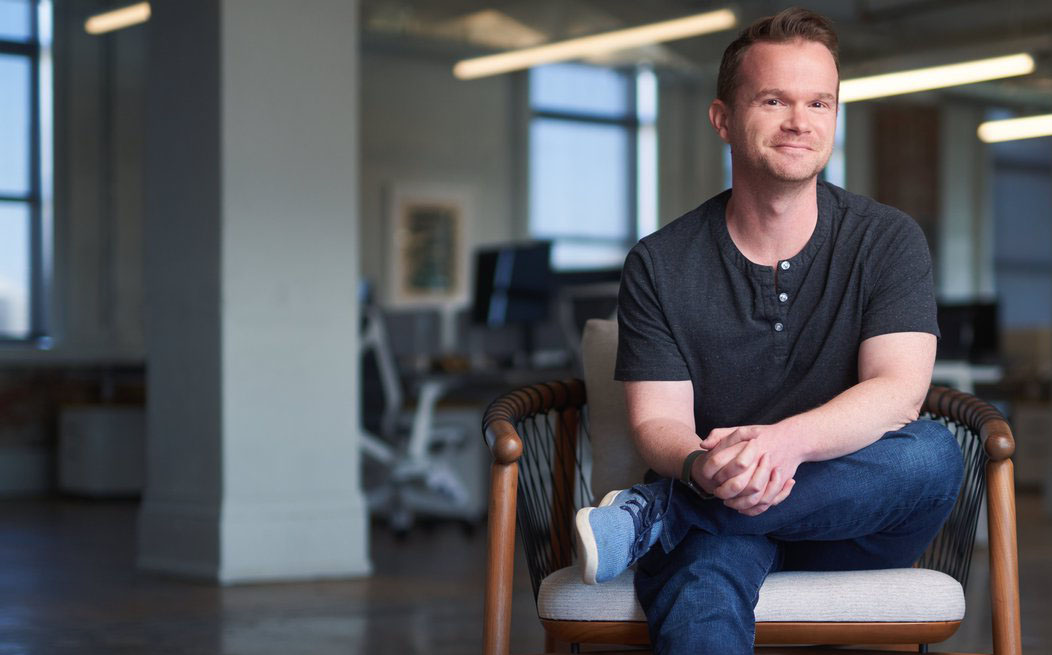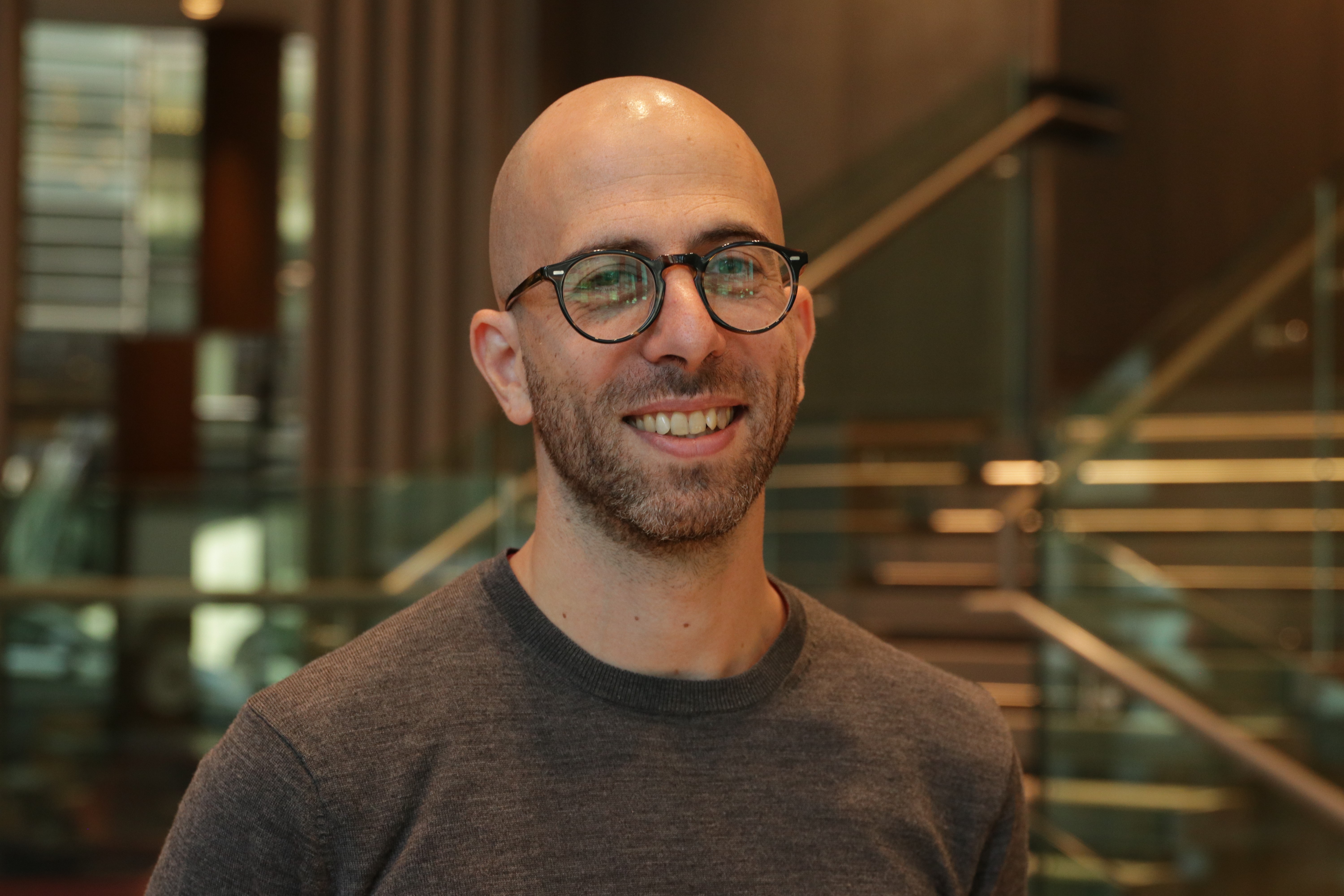Orbit Podcast
Orbit 19
Sustainable IT and IT for Sustainability
There can be no businesses left not having to address the challenges of climate change but the larger you are the broader and deeper your impact on the world. When faced with the complexity of a company of many parts, what do you do to clean your own house and that of your myriad supply chain. Hg's Chief Sustainability Officer, Caroline Löfgren, speaks to Christopher Wellise, Director of Sustainability at Amazon Web Services and Robin Åkerberg, Head of Sustainability for Visma.
Listen on:
Episode Transcript
Caroline Löfgren
Hello, everyone. Welcome to Orbit the Hg podcast series, where we speak to leaders and innovators from across the software and technology ecosystem discussing the key trends changing how we all do business. I’m Caroline Lofgren, Chief Sustainability Officer at Hg Today, I’m joined by two sustainability leaders within the tech sector to discuss our industry’s role in navigating the world’s sustainability issues.
Before we get started, why don’t you both introduce yourselves?
Christopher Wellise
Sure. Hi, great to be with you today, Caroline. I’m Christopher Wellise. I’m the director of sustainability for Amazon Web Services, AWS.
Robin Åkerberg
Very happy to be here as well, Caroline. My name is Robin Åkerberg. I’m 28 years old from Helsinki, Finland, working as head of sustainability for Visma.
Caroline Löfgren
Great, delighted to have you both with us today. You’ve joined us from two big businesses. Christopher, from one of the world’s largest tech companies. Robin, you’re from one of the largest companies within the Hg family. As I said, two big businesses, but still that’s a different scale. AWS, one of the world’s largest computing businesses, Visma one of the largest core business service or software providers in Europe.
You will have faced, and are probably facing, different challenges when it comes to sustainability within your businesses, but I think we can probably all agree that one common challenge that we all face is climate change. I suggest that we kick off today’s podcast by talking about climate change in the context of technology businesses. I guess with climate change being such a high priority across many businesses across society and for regulators, more and more businesses are keen to do their bit in combating climate change.
At Hg, we are one of the first PE firms globally to commit to the science-based targets initiative. We’re trying to do our part too. I would love to hear a bit more about AWS and about this man, the work that you do across your businesses.
Christopher Wellise
Sure. Thanks, Caroline. Happy to jump in. Just to level set, when we talk about cloud computing at a company like Amazon Web Services, what we’re really referring to are the on-demand delivery of IT resources via the internet through what is typically known as a pay-as-you-go type format. Instead of buying, owning, and maintaining your own data centers and servers, customers, large enterprises, SMBs, governments can actually acquire technology such as compute power, storage, databases, and other services as an as-needed basis.
It’s similar to how consumers flip a switch to turn on lights in their home and the power company sends electricity. With cloud computing, companies like AWS manage and maintain the technology infrastructure in a secure environment for our customers. Then they access the resources via the internet to develop and run their applications. Obviously, when you’re talking about a business like a cloud computing business, energy is super material, super top-of-mind, directly connected to issues like climate change.
We think about climate in two key dimensions. One is through the way we consume energy from a demand perspective, how we improve, increase the efficiency of our own infrastructure. The other is how we power it on the supply side. Renewable energy is obviously something that’s super, super important, not only to our business, but also as a method of greening the grid for all customers globally.
Caroline Löfgren
Great. Robin, how do you think about it from Visma?
Robin Åkerberg
Well, I think I would say Visma has really taken big leaps when it comes to acknowledging climate change and also working towards getting more and better data for our organization. Visma grows a lot through acquisitions. That has, of course, some challenges.
Visma consists of approximately 200 business units and all working in their own ways. They’re of different sizes. A lot of these companies, and our customers who are also in different segments and different types of business, they’re asking basically the same question. How do you start tackling climate change? Where do you begin? What do you do?
At Visma, basically we’ve started by collecting data, getting our own house in order, so to say. But I do believe, as Christopher was talking about also, that’s how you then consume data or energy in our data centers, or through our data centers and through our products, that’s where we really can have an impact and I think how we can help our customers tackle climate change. That’s one of our biggest positive impacts and opportunities for us.
Caroline Löfgren
Great. I guess we will agree that if you don’t measure, you can’t manage. I know that Visma is working on a few products in this space too. Anything you’d want to mention about them or share?
Robin Åkerberg
Absolutely, we different products in development, both regarding or related to sustainability reporting, automated reporting against different reporting framers, such as the GRI. We’re also looking into different tools to calculate automated carbon emissions based on transactional data and things like that. There’s a lot of interesting initiatives going on.
Caroline Löfgren
Christopher, I think you guys have some pretty exciting initiatives that are about to be launched as well or just have been announced around your carbon footprinting for customers.
Christopher Wellise
Yeah, that’s right, Caroline. I think, to Robin’s point, you certainly can’t manage what you can’t measure. We tend to think of things through this matte measure reduce construct. Just like Robin’s customers, our customers really want good, high-quality data so that they can understand deployment of their workloads, how could they best use infrastructure to improve the sustainability of what they’re doing from a technology perspective? I think one of the exciting things that’s happened in our space collectively over the course of the last decade or so is companies have really moved away from this arbitrary incremental approach to climate goals to now really focusing on climate science. It’s the first time that we’ve developed a planetary boundary to really develop goals.
At Amazon, it’s the Amazon climate pledge is really our North Star, which is to be net carbon zero by 2040, 10 years ahead of Paris. We know that a lot of our customers are also heavily focused on their own targets. The way to help them get there is by providing good data. As you mentioned, Caroline, the customer carbon footprint tool that we’ve developed helps them to understand not only how our pathway toward 100% renewable energy is helping them meet their sustainability targets, but gives them some granularity in terms of workloads they’re deploying at a regional level, and also at a service level. It provides backward-looking data, as well as forecasts based on the work we’re doing around renewable energy.
Robin Åkerberg
Can I just ask you, Christopher, here because I know you’ve been working with sustainability for quite a long time, how do you see the development of how companies react to climate change? I mean, I guess historically it’s been a lot so that CSR is a side thing that you do on the side of business. How has this become more a part of company strategies and essential business?
Christopher Wellise
I mean, I think if you look at the core products that you mentioned, Robin, that you’re developing at Visma, ESG-related frameworks and software that will help companies do reporting, that’s a clear sign, just the fact that market is growing so quickly. That’s a clear sign that we’ve moved away from now this, “Hey, we think it’s a good thing to do,” to where stakeholders are actually demanding, in particular, the investor-driven community, is actually demanding of companies that they are determining what is material to their business from an ESG perspective, a sustainability perspective. Then reporting against those KPIs in a very rigorous fashion. The software tools you’re talking about are helping companies to do this.
I think that’s probably the biggest shift is that it’s really gone from a, “Hey, we see this coming. We know it’s important. It’s the right thing to do,” to now, if you haven’t been thinking about it in a very rigorous manner for at least the last five years, you’re probably really, really far behind at this point because customers are demanding it, stakeholders are demanding it. We’re seeing emerging regulation around the world, particularly in Europe, where you are. I think those are the big shifts that we’ve seen.
Caroline Löfgren
I think you are spot on that. There’s a lot that’s happened only the past year. I somehow think that the pandemic has almost made businesses a bit more humble as well. We do think more about these things, not just climate change, but anything else ESG-related about our people, about the planet, et cetera. A lot of driving forces behind it with regulation being a large part, but society being another. Seeing black lives matters, we have Greta Thunberg and all the students demonstrating for climate change. It’s becoming much more front and center of everyone’s mind.
Christopher, as Robin alluded to before, you’ve been in a long time in the tech space, what are the key actions that you use that tech businesses can take to reduce their impact on climate change day on a firm level or through supply chains or through customers?
Christopher Wellise
Yeah, absolutely. Well, I mean, I think building on Robin’s question too in terms of the shifts, when you’re looking at the work that large enterprises are doing, I think it’s one of the things that’s also happened in the last year to two years is most large enterprises that have been doing this work for a period of time now have largely figured out the Scope 1, Scope 2 problem.
Most companies have renewable energy targets. Most big companies have climate targets around their Scope 1 and Scope 2. There’s really now this big pivot to what’s happening in Scope 3. How do we measure across the value chain? We know what it takes to get our four walls, our backyard in order, but it’s really going to need to take a network effect, really an ecosystem of change, all of us working together, customers, suppliers in a pre-competitive fashion in order to have real impact at scale.
I think that’s also one of the things that’s happening is … and look, Scope 3, I mean, to be honest, is a very complicated problem for most companies. We’ve been at this for a long time. I’ve been doing this for a number of years. It’s really complicated. The laws of physics make it really difficult, particularly a company like ours that’s growing at such a rapid rate, it’s difficult to solve the Scope 3 challenges. I think that’s another thing that we’re seeing is this shift to moving to the value chain.
Robin Åkerberg
I would definitely agree with Christopher there, that that Scope 3 is definitely the hardest scope, of course. But also I think one challenge is that, especially for very small companies, they know that sustainability is a relevant topic. They know that they should be doing a lot of things, but I think, as I mentioned before, they often don’t know where to start. That measuring is step one, but you also need to understand the data and understand what the scopes are, really know how the greenhouse gas protocol is built up. I think that’s a challenge, for especially the smaller companies, and let’s say, less than 50-employee companies that want to do more, but don’t really know what’s relevant to them.
Christopher Wellise
Just building on it, it’s probably just for our listeners too, it might make sense to just briefly define. Most people probably are familiar with the scopes, but in case they’re not. Scope 1 really refers to emissions that a company has related to their own operations. Think about automobiles that you own or diesel generators where you’re burning fuel.
Scope 2, which is a big one for most companies, is typically related to the energy that we’re consuming. The emissions actually occur at the production location. Then Scope 3, is everything else. All the upstream stuff that’s happening, your supply chain, all the way up through extraction of materials, mining, and so on and so forth, assembly manufacturing, and then the downstream use of products. That’s really why it’s so complicated is because it’s really outside of the operational control of most companies. We really need to work with our suppliers and across the entire value chain to really have impact.
I think one of the things that’s so exciting in technology is the fact that not only are we focusing on improving the environmental performance of our own footprint, but in Robin’s case, you’re a company where you can actually improve the performance of your customers. I tend to refer to this as sustainable IT and IT for sustainability. Sustainable IT is really how do we make our infrastructure super, super efficient, powered on renewable energy, do things like utilize waste heat. But then the real exciting thing for me is how do you then apply technologies to have big impacts across industries, agriculture? I know, for instance, HG, Caroline, you guys invest in IoT and the smart factory floor of the future. These are ways that we can actually improve the sustainability of entire industry verticals. I think that’s really the big opportunity here as we’re moving into the new phase in sustainability.
Caroline Löfgren
I like the concept of that, sustainable IT and IT for sustainability. That’s a good one.
Robin Åkerberg
I’ve heard you mention the example, Christopher, before of the washing machine. I really enjoy that example, actually. You can have A++-rated energy washing machine, but if you wash one sock at a time, it’s not going to be so efficient. I think that’s really a great illustration of the problem here.
Basically, what we’re looking at Visma is enabling sustainability by design and default in our existing software. That’s something that we’re looking into a little bit more now, basically adapting our existing solutions and taking a sustainability view on them. Or, as an example, if you have a payroll product, just having the product identify gender pay gaps as an automatic part of the tool, or just providing how much energy is saved by using an optimization code or something like that as part of the tool and getting that data out there to our customers, also in our existing software, even though they’re not directly related to sustainability.
Then there’s, of course, the opportunity to have sustainability software like the ones that we mentioned previously. There’s basically three ways of looking at it all in all. The sustainable software enabled sustainability by design and default, and that’s where we’re previously discussing about the green software engineering and architecture, making sure that we have fit for use coding languages, that we have green energy in our data centers in our own operations and the washing machine example there.
Christopher Wellise
I love the example. I think that’s a perfect example of this concept of IT for sustainability. Often, we don’t think about something like accounting software is something that can help solve sustainability challenges. But if you think about it, I mean, accountants play key roles in assessing and disclosing climate risks as part of CSR reporting, they’re becoming important players in how businesses respond to climate change. Then you mentioned they can also ensure, and software tools can ensure, how company gains benefits from its sustainable practices, enhance employee retention, customer satisfaction, aligning with sustainability-related targets. All super important elements.
Then those companies come to us as a supplier, a cloud provider, and say, “Well, how can you actually help us and our customers run these SaaS solutions in a more sustainable fashion?” Then you ask for the data too. Our key customers are asking for that data. That’s really this linkage across the value chain that we’re talking about. I think that’s a perfect example of that in play.
Caroline Löfgren
Is cloud more sustainable?
Christopher Wellise
Well, it’s a great question. The answer is absolutely yes, particularly when you’re comparing it to a traditional on-premise-type data center environment. It’s really about scale. When companies use a cloud provider like AWS, it’s really our scale that allows us to achieve much higher resource utilization and energy efficiency than the typical on-premise data center-type environment. Our global infrastructure is built in on our own custom hardware, which is purpose-built and optimized specifically for the customer workloads that our customers run. It’s actually designed specifically to run particular workloads. It’s use-specific.
We know that it’s between, depending upon whether you’re in the US or Europe or Asia, it’s anywhere between 3.6 and 5 times more energy efficient than the average data center in the US or in the EU. There was a recent 451 Research study, which surveyed organizations across the globe to actually come up with those metrics. It’s really, again, it’s about utilization rates and the fact that we’re able to achieve efficiencies that aren’t achievable in on-prem type environments. We’re able to reduce, we know, carbon footprints of our customers by nearly 80% compared to the typical enterprise data centers. Then our drive toward 100% renewable energy, which we’re on track to achieve five years ahead of time by 2025, actually, that will actually impact, in a positive way, carbon from our customers up to 96% once we’re powered with 100% renewable energy.
That combination of utilization rates, fit-for-purpose hardware, software, and then our renewable energy supply really makes it a much more sustainable approach to powering workloads for our customers.
Caroline Löfgren
Great. I guess on the topic of renewable energy, I mean, you can have a data center that is not efficient at all, but it uses 100% renewable energy so essentially it’s carbon neutral or net zero almost, but it could still waste a lot of energy. There’s a lot of talk about PUE numbers, power usage effectiveness. Are there any challenges with that or is that commonly something that you’d encourage customers or those that want to pick a data central or cloud service provider to look at?
Christopher Wellise
Well, historically PU, or power usage effectiveness, is really the measure that’s been used for decades now, but there are limitations. To your point, one of the things that we’re seeing now in regulations, if you look at emerging requirements for procurement in places like the UK and within the EU, there are specific requests for often what they call market-based method accounting or location-based method. They want to know where companies are actually placing power load. Then there are also specific questions around efficiency and utilization rates.
PUE is challenging because it’s essentially a ratio of the amount of energy that goes into a data center. What gets directed toward the critical infrastructure versus what’s used for everything else, like the lighting and so on and so forth and cooling, and what have you. One of the key challenges with that is it doesn’t take into account the fact that companies like ours, the largest procurer of renewable energy, corporate procurer on the planet, it doesn’t take into account energy supply. Are you using green electrons to power that? Are you doing things with waste heat and so on and so forth?
Those are some of the challenges around a metric like PUE, but it’s still remains the most widely-accepted metric that’s used in our space, but there are lots of groups, different companies working together focused on coming up with a metric that’s more sustainability-driven.
Caroline Löfgren
In that the context of climate change and ESG sustainability, we talked about external reporting engagement. I guess we can’t avoid the topic of greenwashing. I’d love to get your views on what is greenwashing? What does it actually mean? What’s the issue here and how could it be avoided?
Robin Åkerberg
I mean, greenwashing is basically providing a wrongful image of what you’re doing in terms of sustainability to stakeholders. I think there has been probably a lot of changed views on greenwashing over the years. One risk that I see with greenwashing is that it’s basically un-involuntary sometimes. People, due to lack of awareness, due to maybe not knowing what is included in sustainability and what’s communicated, what the results effects of that are. I think that’s why also sustainability is such a broad topic. There’s so many different terms and words for it that you need to know. Christopher was mentioning market-based, location-based emissions. I think there’s a bit of lack of awareness that might risk people greenwashing un-purposefully.
Caroline Löfgren
I guess another point on the whole greenwashing topic that’s recently been in medias around standards and how important it is to have standards. Of course, even if in the context of climate, we have the greenhouse gas protocol, we still, as mentioned, have huge challenges when it comes to really nailing the Scope 3 carbon footprints. Even if there a standard, there’s flexibility within that. But, I think generally, it goes the same for the private equity industry where it more broadly cost the investment industry too is that there is a lack of standard when it comes to ESG and ESG reporting and assessments and so on. That, perhaps, opens up the risk of potentially being accused of greenwashing.
Robin Åkerberg
We see, in Europe, there’s the EU taxonomy being developed currently, which is a way to standardize and to prevent greenwashing. One important aspect of that is that do no significant harm. Basically, how the EU is defining green activities is so that you significantly contribute to different environmental aspects. But, the key there is also that you do no significant harm to other environmental aspects. I think that’s a little bit related to what I mentioned before. It’s really relevant to know what is included in the concept of being green or talking about sustainability in general. You have the examples of social washing as well. An extension on greenwashing and taking into account the social aspects of the sustainability as well.
A lot of aspects to keep in mind and you need to be aware of where you’re good, where you’re not so good and be transparent. Basically, as we see with transparency, it’s really, really key to giving stakeholders a truthful view of the company and the business.
Christopher Wellise
We’d be remiss too if we didn’t mention our employees. I think one of the cool things in a company like Amazon is there’s a lot of passion about sustainability well outside of the sustainability team. We know that, for instance, I can’t be successful unless we have a distributed model. There are folks within other teams within our data center engineering team, within logistics teams, supply chain teams, and they’re pushing performance too. Particularly when I studied sustainability 20 years ago, I mean, there were very few schools in the world that were actually turning out graduate programs to sustainability. Now there’s MBA programs. You get these passionate young folks coming into companies that are super smart and have great ideas. They’re pushing the envelope for all of us.
I think that’s another exciting thing that we’re seeing is really just the employee base is growing around this particular topic. We know that it’s going to take really all of us working together in all parts of a company to achieve success.
Caroline Löfgren
Do you think by, I guess, that embedding sustainability into the purpose of the business that that helps attract new talent or helps engage current employees? I guess, what’s the link between sustainability and company or corporate purposes?
Robin Åkerberg
I definitely think it has a huge impact. Like Christopher was saying, there’s a lot of demand from employees as well, both existing and potential employees. It’s definitely important from an employee branding perspective. Also adding to what Christopher was saying, but if you’re not doing as you’re communicating, I think employees really, really push the sustainability work.
Caroline Löfgren
I guess you have their employees pushing it and really helping you. At the same time, if you’ve got an agenda as a business when it comes to sustainability, that also helps engaging employees. It’s a bit of a relationship between pushing from a sustainability team, but also having employees pushing you and living where there’s synergy between the two.
Robin Åkerberg
Yeah, absolutely. At least, at Visma, we’re, like I mentioned, a company of 200 business units. It’s really important that we have these global Visma group-wide targets and objectives, but we also really want that local ownership. We want these employees that are enthusiastic and are knowledgeable within this field to push forward and get their voices heard really so that there’s a bit of a balance between local ownership and having group targets as well.
Christopher Wellise
I could certainly just touch on that from an Amazon perspective. I mean, sustainability, and we really mean it when we say that it’s integrated into our business strategy. One of the things that employees are really governed by are a set of leadership principles that we all learn, even before we join the company. There are 16 of them. There are two new ones. They’re very real. They come up in all our conversations. The most recent one is an exciting one. It’s essentially, what it says is that success and scale brings broad responsibility. I think there’s a direct link to sustainability here.
While we started in a garage, we’re obviously not there anymore. We know that we’re big and we impact the world and we’re very far from perfect. We need to be humble and thoughtful about even the secondary effects of our actions. This is something that we’re thinking about. The thing that gets exciting is when I’m talking to construction teams, for instance, and we’re thinking of new ways to innovate and impact other industries at scale, we think about the use of products like low-carbon concrete. While we may only use a certain portion of a product like a low-carbon concrete, obviously, it’s one of the world’s largest emitters. When suppliers work with a customer like Amazon, they take the intention seriously. We think we have the ability to impact whole industry verticals by applying pressure through not only purchasing power, but through innovation. It’s an example of impact at scale through responsibility of our size and scope.
I’d love to hear from you, Caroline. I’d love to flip the script a bit. As the interviewer here, I mean, you guys are obviously investing in this space. What are the trends that you’re seeing? You’re really at the intersection of the flow of capital and sustainability? What are you seeing?
Caroline Löfgren
What I’m seeing is a drive towards standardization in the private equity industry around the questions that we get from our clients, but also the questions that we ask portfolio companies. Certainly, if I look at the number of questionnaires we get from our clients, so the big pension funds, the endowments funds, they are getting more and more interested in this. Either it’s interest or it’s more regulatory compliance. I’m hoping it’s a combination of both. But there’s a huge interest in this space and much more pressure on investors today to really think about sustainability and ESG as they invest.
That’s, I guess, one aspect is that we today it’s almost impossible to raise capital as an investor if you have zero commitments on ESG, if you don’t do anything on ESG. But more importantly, as an investor, what we want to do is build great businesses. Businesses that are growing, have great talent, are able to keep great talent within the businesses and engages with their employees, but also cares about the planet are good corporate citizens. Engaging with portfolio companies on these topics really helps driving the agenda.
I personally made the move into private equity because in my previous role at a big global company, we had been pushing a certain topic or working on a certain topic. Then it was only when an investor asked us the question about that topic, that things really started to happen. That’s when I thought, “Hmm, I want to be on that side. I want to ask those questions and really make sure that things start to happen.” Then that’s the key driver here is it’s not just about what our investors are asking us, but, of course, we want to be able to raise capital so that we can invest in businesses on behalf of our clients, but the most important thing is about building businesses that grow and are sustainable for the long term.
Christopher Wellise
That’s awesome. Thanks for sharing that. I think people often ask us that have been in the field for a while, “Is there hope?” I think when you look at where startups are heading and where the flow of capital is going, that really, to me, does provide massive amounts of hope because it’s really the Amazons of tomorrow are these startups that are occurring now with people that are embedding sustainability into the purpose of the company. I think they’re really the ones that are going to potentially have the greatest impact.
Caroline Löfgren
Definitely agree. If I think about that 11, 10 years ago, when I started in the field of sustainability, my previous boss was often referring to what we’re doing that, “Caroline we’re pushing water uphill here.” It was sometimes, and I think we still may get that in our jobs today, but it was a struggle, but it’s only in the recent years that things have really started to shifting. I’m no longer knocking on closed doors. People are standing in the doors shouting for support on ESG or sustainability or are really, really keen and interested in the topic. That’s fantastic to see that shift and also makes my job a lot more fun because I’m no longer pushing water uphill. I have the permission to work on these topics and do it in a way that others are engaging in it too.
Have you experienced something similar in your career, Christopher, in terms of if you look at back when you started in this field?
Christopher Wellise
Yeah. I mean, I remember one of the companies that I worked for before, a story I often tell, your point on investors is a really important one. I remember attending analyst calls with investors. I was always the guy in the corner. Leadership literally said, “Don’t worry. No one’s going to ask a question on this.” I remember the day that literally somebody, one of the world’s largest investors, asked a question related to ESG and essentially said, the company will go unnamed that I worked for, and essentially said, “What are you doing on this topic?” Literally, the CEO and the chairman of the board looked at each other like how are going to respond to this? I had been waiting for three years to answer this question. It was literally the floodgates began to open.
To your point, the challenges are different now. That wasn’t Amazon, by the way. That was a different company. The challenges have changed. It’s gone from, as you said, getting the attention of leadership, now there’s this real sense of urgency, but it’s now how do we actually have the impact that we know that we need to have in a very short period of time? That’s a very unique challenge. You no longer are trying to convince and change hearts and minds. Now they know it. They’re giving you the investment and you need to move really, really fast. How are you going to do things like achieve net zero by 2040 or by 2030 or by 2020, like these companies are really going after?
These are the questions that we’re now hearing amongst our peers and why idea sharing and collaboration, to Robin’s point, is going to be so critical because these are really big global challenges. We’re confronted with things like the laws of physics. We are really going to need to figure out how to do this and figure out how to do it together. Time is of the essence. We don’t have a lot of time. We need to reverse big issues. Climate is just the first one. If you look at the planetary boundaries, there are other issues, biodiversity loss, issues around water, and so on and so forth. I think this is the very beginning, the tip of the iceberg, so to speak.
Caroline Löfgren
Robin, Christopher, thank you so much for joining us today. It’s certainly been a very insightful conversation. I hope that all of you listening today have enjoyed this chat too.
Christopher Wellise
Awesome, thanks so much. It was fun. I appreciate it. Great chatting with y’all.
Robin Åkerberg
Thank you so much for my part as well, inspiring stuff.
Orbit episodes
Orbit Podcast
The 3 speed problem: Oji Udezue on CPO leadership in the age of unlimited engineering
Episode detailsOrbit Podcast
Fevered determination: Building Zalos from zero to enterprise in 5 weeks
Episode detailsOrbit Podcast
Trust, velocity, and building the Answer Engine: Dmitry Shevelenko of Perplexity speaks to Farouk Hussein
Episode detailsOrbit Podcast
The long road to the last mile: Nic Humphries and Matthew Brockman reflect on 25 years of Hg
Episode detailsOrbit Podcast
AI, Control Points, and the Next Wave of Vertical SaaS with Tidemark Capital founder, Dave Yuan
Episode detailsOrbit Podcast
A glimpse of the next generation: Zoe Zhao and Annalise Dragic of Azlin Software
Episode detailsOrbit Podcast
The business case for AI: Brent Hayward of Salesforce, David Carmona of Microsoft & Nagraj Kashyap of Touring Capital
Episode detailsOrbit Podcast
Mastering the billion-dollar software playbook: Joe Lonsdale of 8VC & Eric Poirier of Addepar
Episode detailsOrbit Podcast




















































